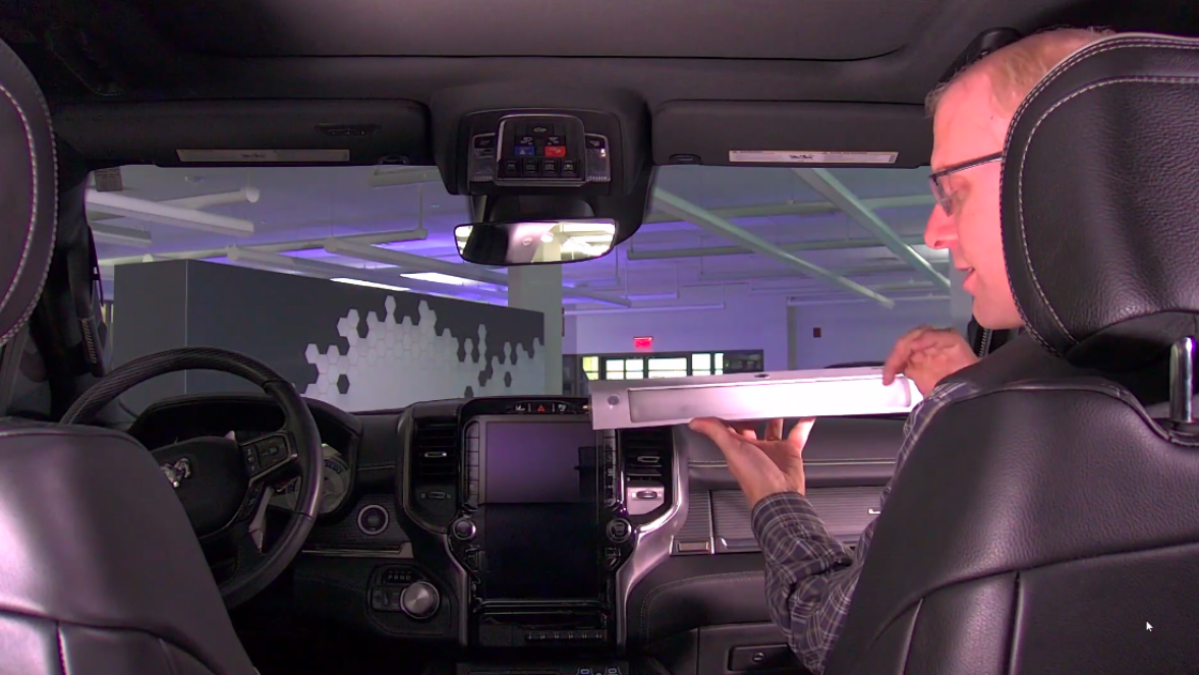
Cars became something like refuges during the pandemic — for some, the car was a space to escape from the house-turned-office-turned-classroom.
But as COVID-19 concerns persist, drivers may be inclined to literally clear the air and clean off surfaces like the steering wheel, dashboard, and door handles where the virus could potentially linger. We’re spending more and more on not-entirely-necessary cleaning supplies. Americans’ monthly spending on sprays, wipes, and other hygiene products has gone up each month of the pandemic, reaching a nearly $20 high at the beginning of this year. Carmakers and cleaning product manufacturers are noticing this new worry.
But even as cleaning solutions proliferate the personal automobile space and beyond, Dr. Emanuel Goldman, professor of microbiology at Rutgers New Jersey Medical School’s Department of Microbiology, Biochemistry, and Molecular Genetics, maintains that good ventilation and hand-washing are the best defense against COVID-19 and other germs. Along with getting vaccinated. “That’s all you need,” he said.
Still, Detroit is getting into the hygiene game. Look at the lineup of upcoming Ford vehicles: the Bronco Sport, Escape, Explorer, electric Mustang Mach-E, and hybrid Maverick pickup will all include a Ford-developed Refresh95 air filter. The spongy-looking square can filter out particles 30 times smaller than a human hair, Ford claims. That’s enough filtration to capture any COVID-19 viruses floating around.
The particle-trapper will also be available to existing Ford customers who want to retrofit the added protection into cars made before the pandemic.

Filter it out.
Credit: Ford
Parts supplier GHSP sees Ford’s extra sanitation layer as part of a trend that started in Asia, and is expected to spread to US car buyers. “There’s a heightened sensitivity” to germs on surfaces and in the air since the pandemic began, Marc Smeyers, GHSP’s chief technology officer, told me. “People want a certain assurance level.”
During a virtual demo in a modified Dodge Ram, I saw how the company’s Grēnlite UV-C tool could be used. Fastened to the front ceiling of the car, the machine could be turned on after rides, and is meant to disinfect anywhere its glow radiates.
Like UV-C robots that have come before it, using ultraviolet-C radiation is potentially effective, according to the CDC, because it destroys the protein layer around the coronavirus. With long and strong enough exposure the virus becomes inactive, but claims around products’ COVID-fighting power should always be taken with a healthy dose of skepticism.
And a UV-C feature might be far from the number one concern when considering a new car. A CarGurus poll from earlier this month found that only 21 percent of 500 U.S.-based shoppers are “actively shopping for a vehicle that has sanitation features” because of COVID-19 worries.
You may not even know that the car you’re in defends against airborne particles. Cars like Tesla already have a HEPA filter built into its luxury Model S and X with Bioweapon Defense mode. This is a step up from typical car cabin filtration, which traps larger particles like dust and pollen.
Waymo’s newest Jaguar I-Pace autonomous taxis have an HVAC system that flushes out the car with 4.6 air cycles between passenger rides. Waymo claims that this should eliminate as much as 99 percent of whatever was in the car.
You can also buy products and filters, like the EasyKlean UV-C disinfecting wand that can be carried in and out of one or multiple cars.

Wands up.
Credit: EasyKlean

UV-C out.
Credit: EasyKlean
But despite all these products, Goldman, the Rutgers microbiology professor, suggests you might be able to accomplish even more for free. “Open your windows,” he suggests. “That’s all you need to do.”
If you’re riding with strangers, wear a mask and use hand sanitizer until you can wash your hands before touching your face, nose, and mouth.
As to UV-C devices, Goldman urged caution since people can’t be in direct contact with the rays. While effective at killing the COVID virus, it can be risky for anyone around the blasts.
“These cleaning products are hygiene theater,” he said. Especially since COVID-19 is spread through the air more than from surface contamination.
But the ride-sharing context, where air and surfaces can potentially be shared between many people in a short time, seems like one of the few situations where that $90 UV-C wand, and the “hygiene theater” it provides, could be thought of as legitimately useful. Thomas Guan, founder of the startup called ME UVC that makes the wand, told me how Uber and Lyft drivers (supplied with sample units) with wands use them on high touch points like doorhandles.
“I think this is going to be a useful tool for travelers, families, and those who have concerns about infection — all kinds of germs,” said Guan, who studied materials science as an undergrad at Cornell University.
SEE ALSO:
We may not need all those fancy disinfecting robots after all
He said he’s had conversations with Audi and several Chinese carmakers about incorporating his company’s UV-C technology into the air conditioning systems and vents, or into LED lighting to blast the car clean between rides.
Hopefully these products don’t lend a false sense of security or make people less vigilant about other forms of COVID hygiene, like getting vaccinated and masking up. But as Goldman noted, many are simply overkill. “It’s a total waste of money” he said.
Article Source and Credit feeds.mashable.com http://feeds.mashable.com/~r/Mashable/~3/wNslQl6cJe8/uvc-filters-covid-sanitation-in-cars Buy Tickets for every event – Sports, Concerts, Festivals and more buytickets.com

Leave a Reply
You must be logged in to post a comment.